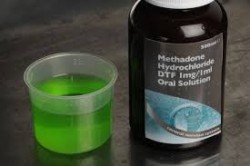Methadone Maintenance and Interactions with other Medications
For people coming off chronic opiate addictions, methadone maintenance treatment provides the physical supports needed to help overcome persistent withdrawal and cravings effects. Methadone, a synthetic opiate drug, reduces the risk of relapse and enables recovering addicts to take an active part in their recovery.

Methadone interacts with some other medications, especially other opiates.
The effectiveness of methadone maintenance treatment relies on accurate dosing amounts or else patients may experience undesirable effects. As with any other form of medication treatment, drug interactions can compromise the effectiveness of methadone maintenance treatment.
By understanding how methadone works and the circumstances in which drug interactions will likely happen, recovering addicts can avoid the unexpected setbacks methadone drug interactions can bring.
Methadone Effects & Dosage Amounts
Methadone maintenance treatment effects offer recovering addicts much needed relief from the residual drug cravings and side effects that persist long after a person stops using drugs. As withdrawal and drug craving effects account for why so many people relapse early on in recovery, methadone maintenance gives a person a fighting chance at living a drug-free life.
According to the U. S. National Library of Medicine, methadone maintenance dosage amounts are calibrated according to a person’s –
- Level of tolerance
- Degree of withdrawal
- Age
- Weight
Anything above or below a person’s required dosage amount will limit methadone’s therapeutic effectiveness.
Metabolism Rates
The rate at which the body metabolizes methadone can influence the drug’s ability to curb withdrawal and cravings effects. As methadone is metabolized in the liver, any other drugs passing through the system can alter methadone’s metabolism rate.
For these reasons, methadone maintenance programs carefully monitor a person’s reaction to daily methadone treatments on a daily basis to ensure the needed dosage amounts are being administered.
Drug Interactions
Methadone maintenance drug interactions not only throw off methadone’s intended effects, but may also increase the risk of serious side effects. Drugs known to interact with methadone’s effects include –
- MAO inhibitors
- Other opiate-type medications
- Certain medications used to treat opiate addiction, such as naltrexone
In effect, drug interactions can diminish or enhance methadone’s effects depending on how any one drug impacts the body’s metabolism rates.
Toxicity Risks
Drugs that diminish methadone’s effects place a person at risk of experiencing unwanted withdrawal and cravings. Drugs that enhance methadone’s effects can place a person at risk of toxicity. Should toxicity develop, a person can actually overdose on methadone.
Toxicity results when methadone remains in the blood stream for too long a time. Toxicity can also develop in cases where another drug produces effects similar to methadone, such as other opiates, tranquilizers and sedative drugs.
Co-Occurring Conditions
It’s not uncommon for people coming off long-time opiate addictions to develop co-occurring psychological disorders as a result of the damaging effects from chronic drug use. In these instances, methadone maintenance programs may also prescribe antidepressant and/or anti-anxiety medications to treat a co-occurring condition.
As certain antidepressant and anti-anxiety medications are known to interact with methadone, it’s important that patients work closely with their doctors to ensure methadone dosage levels are properly balanced with other medication treatments.